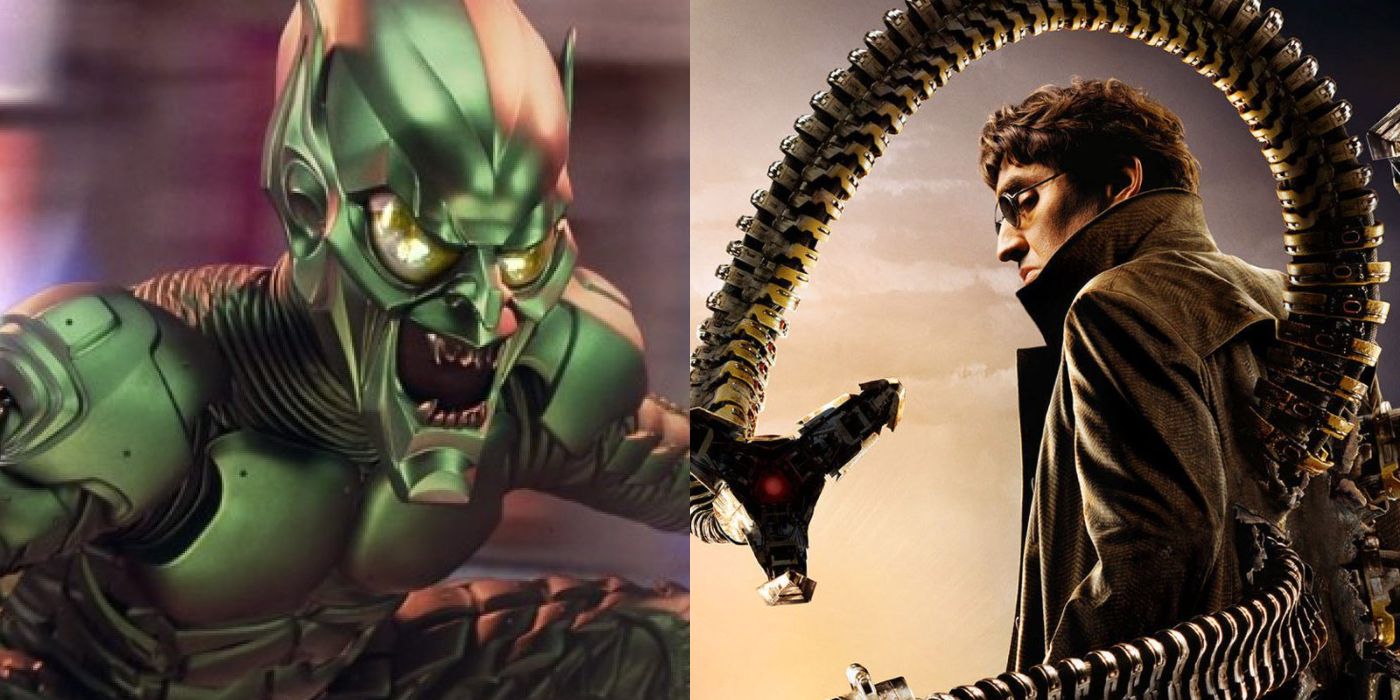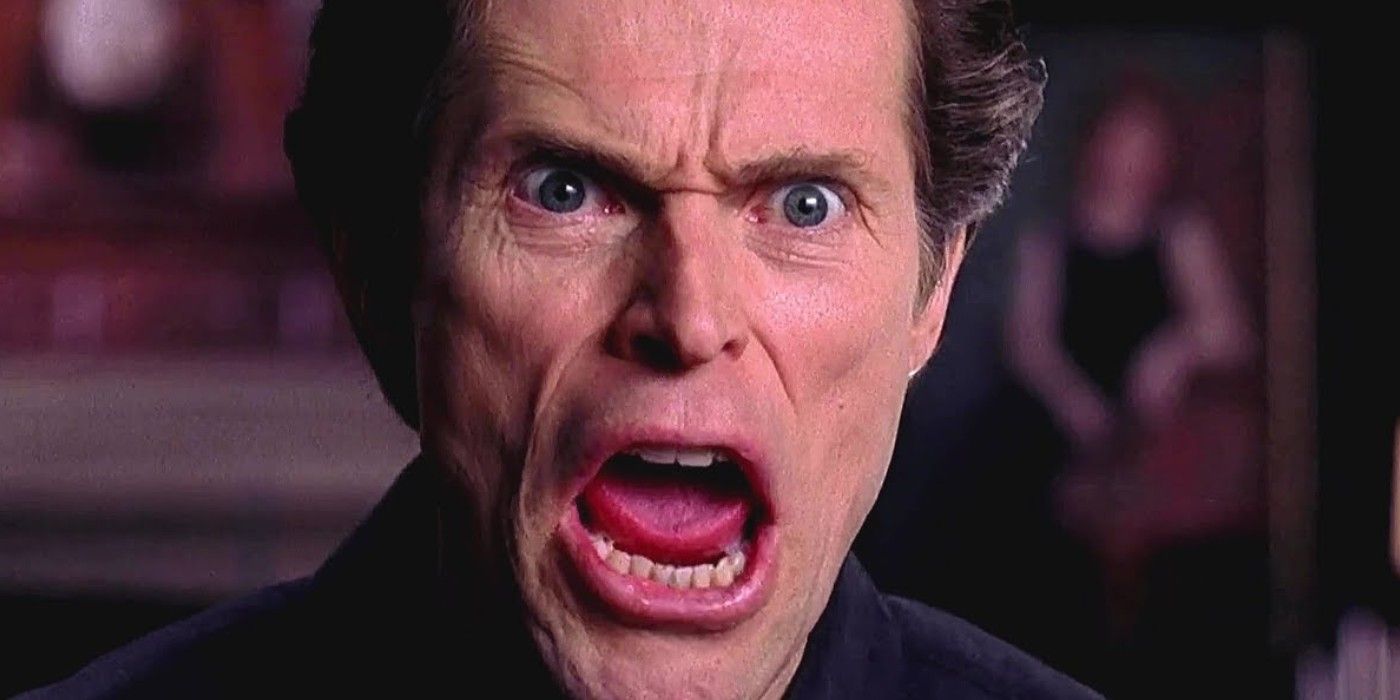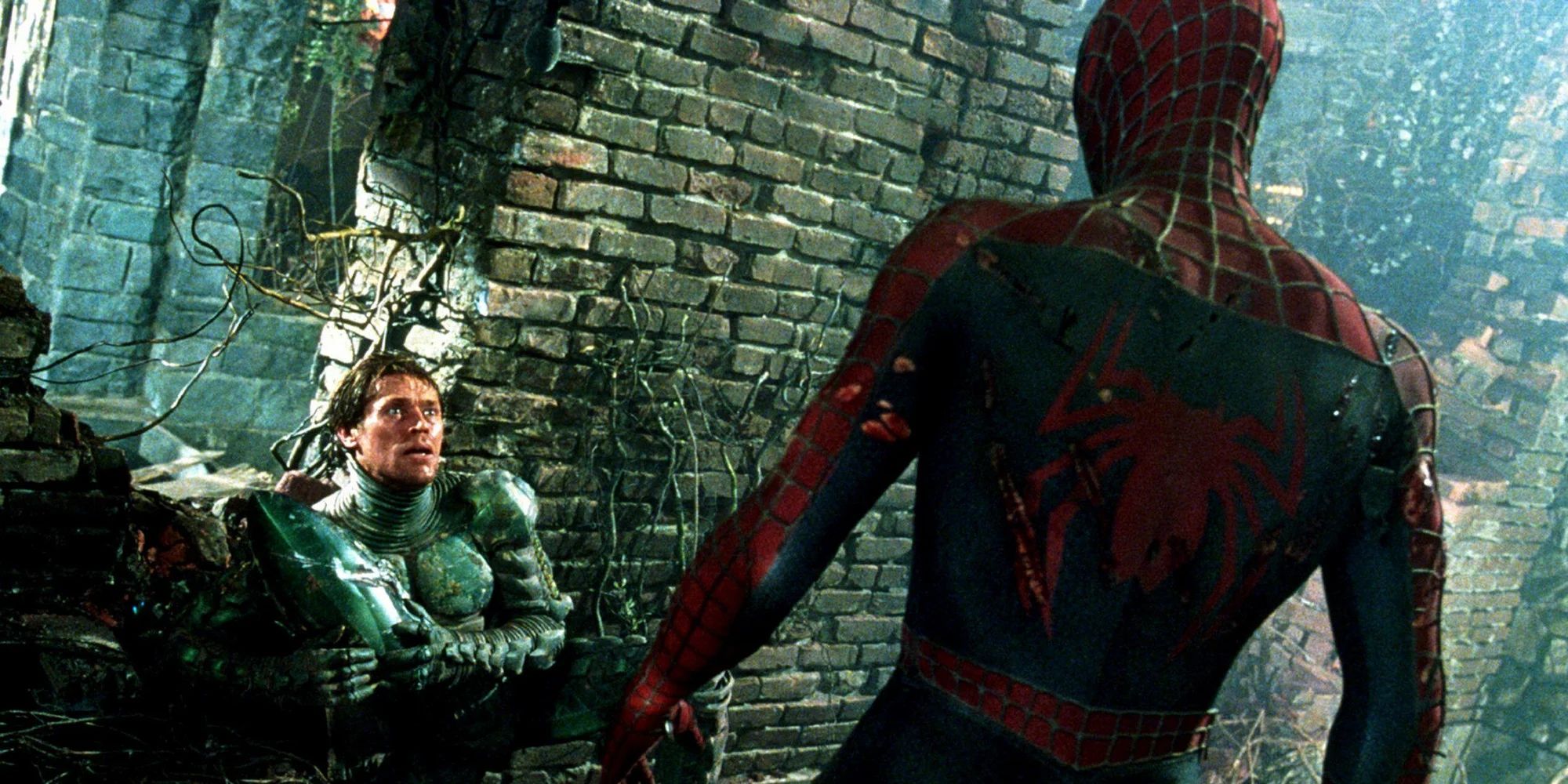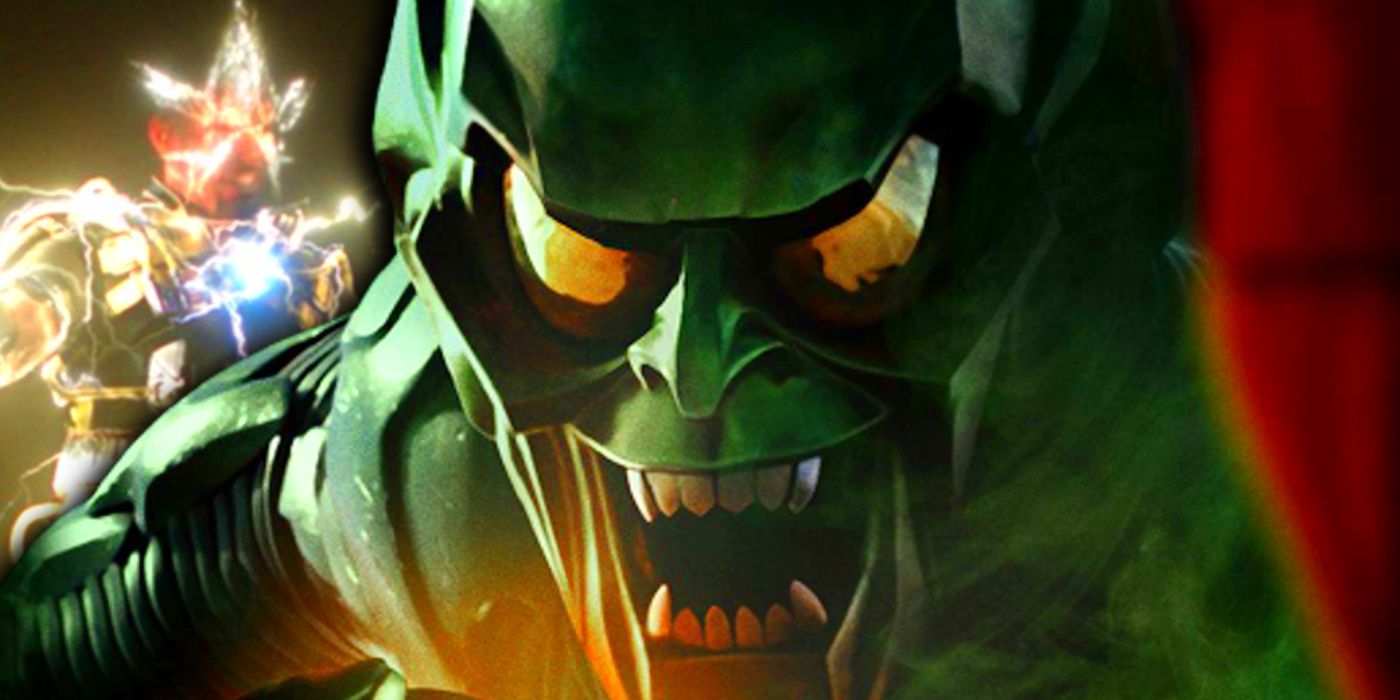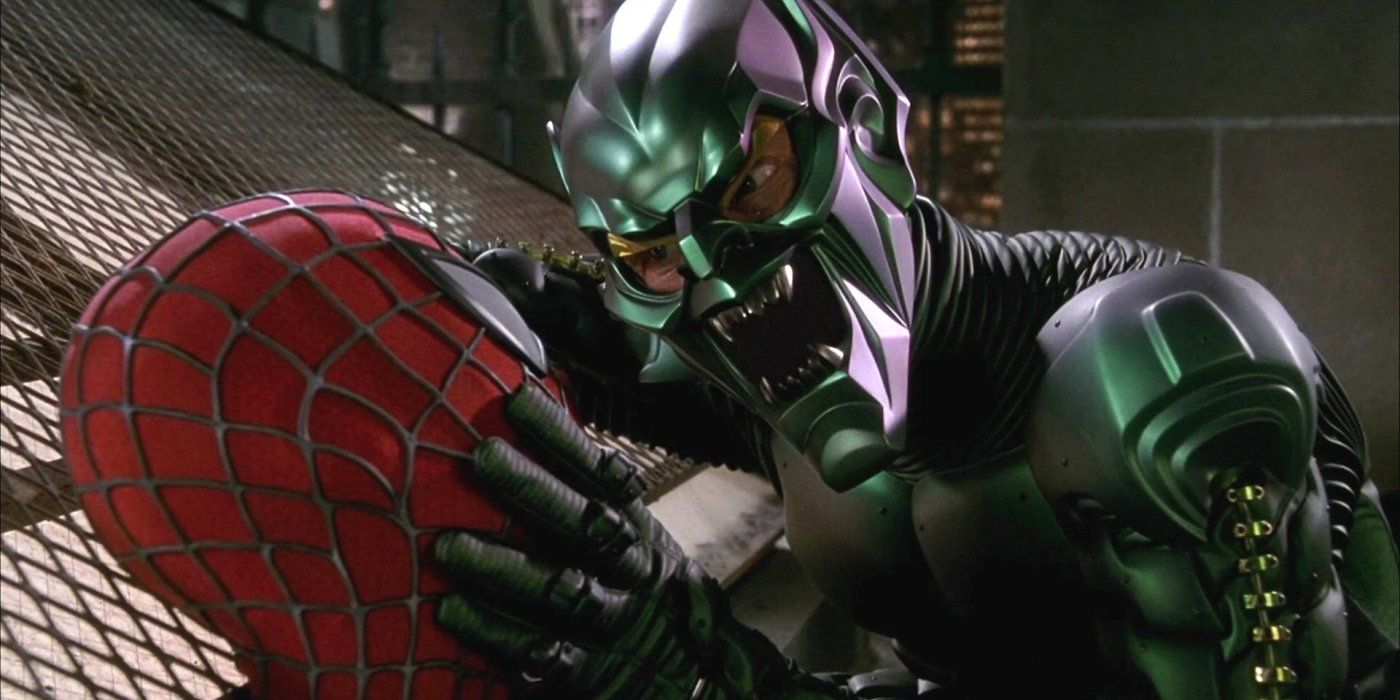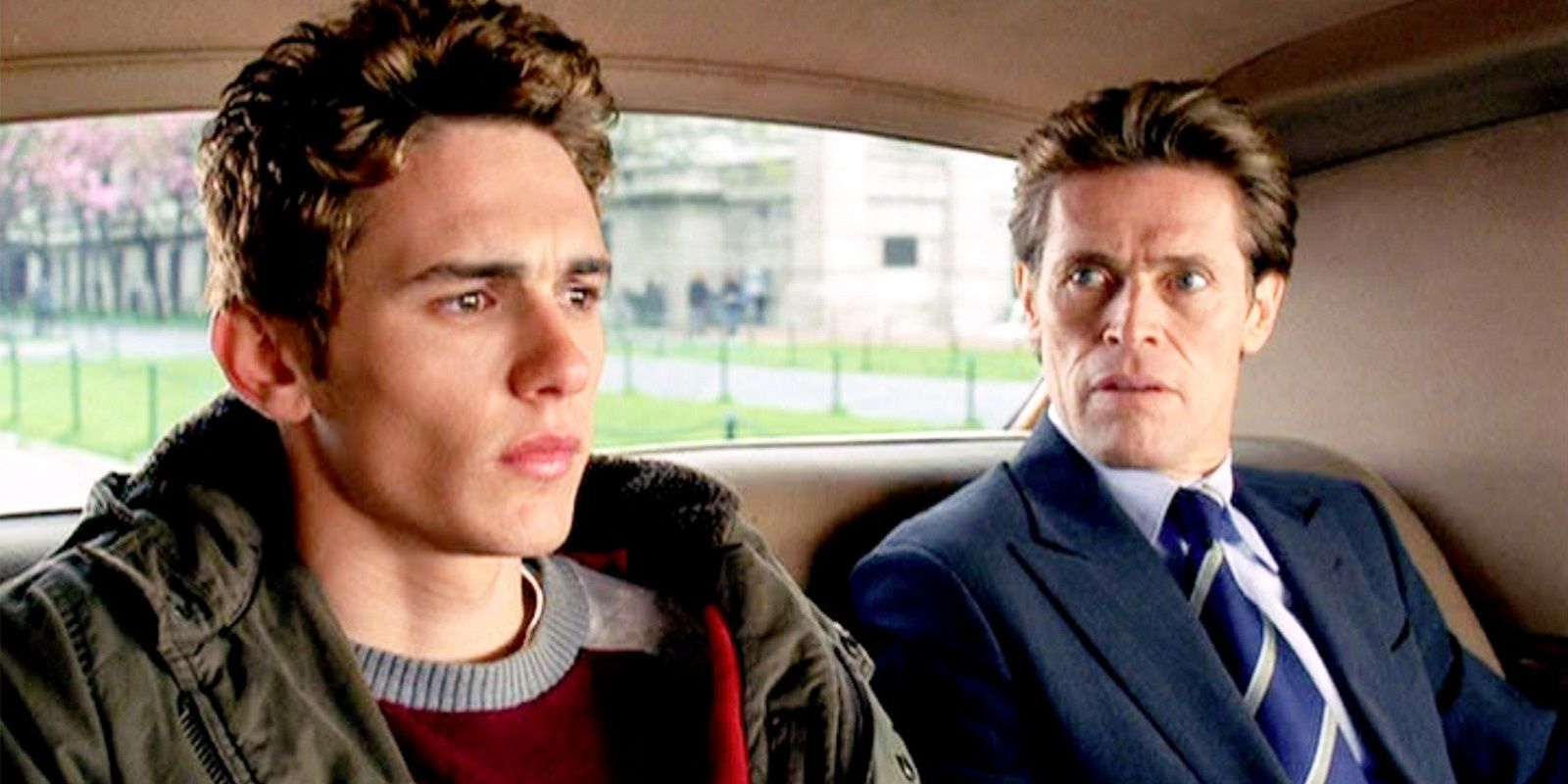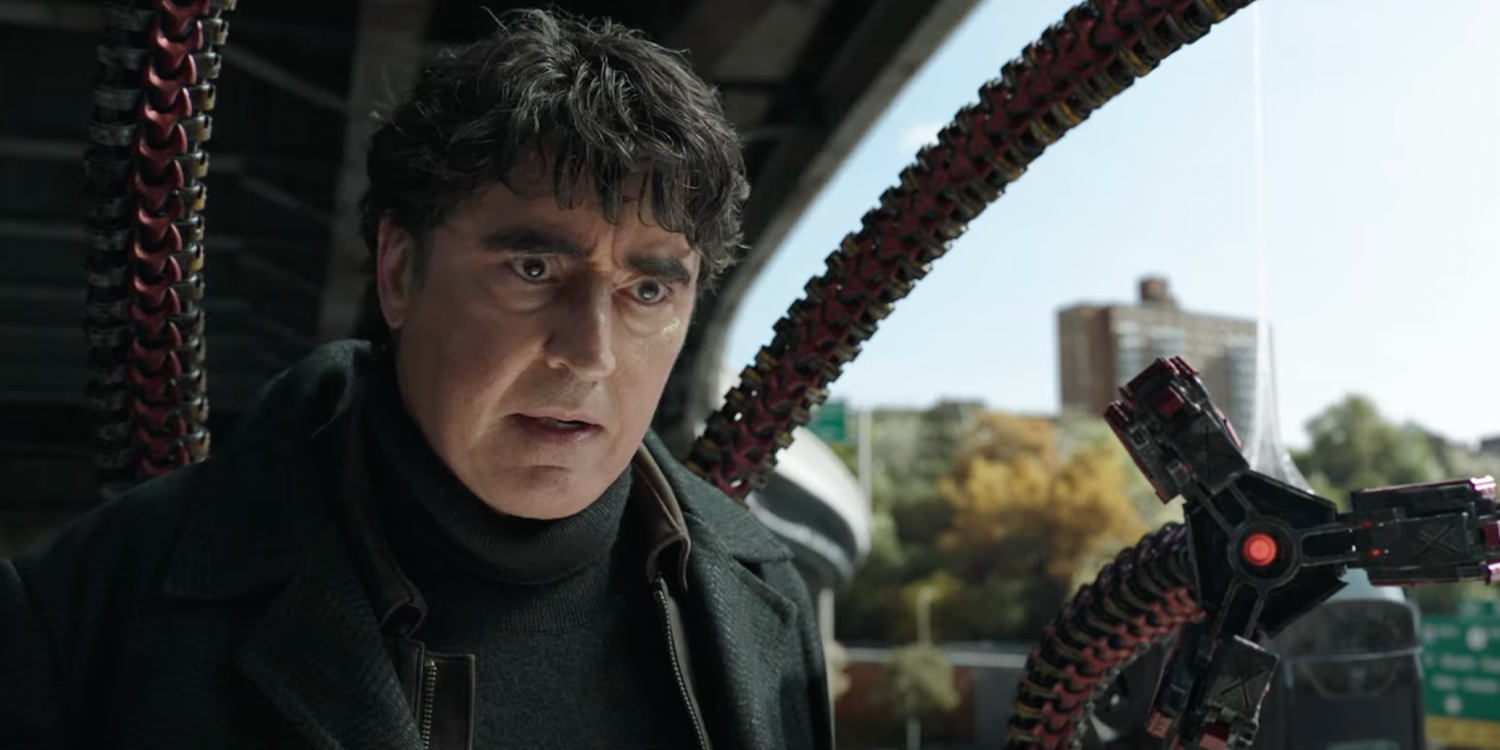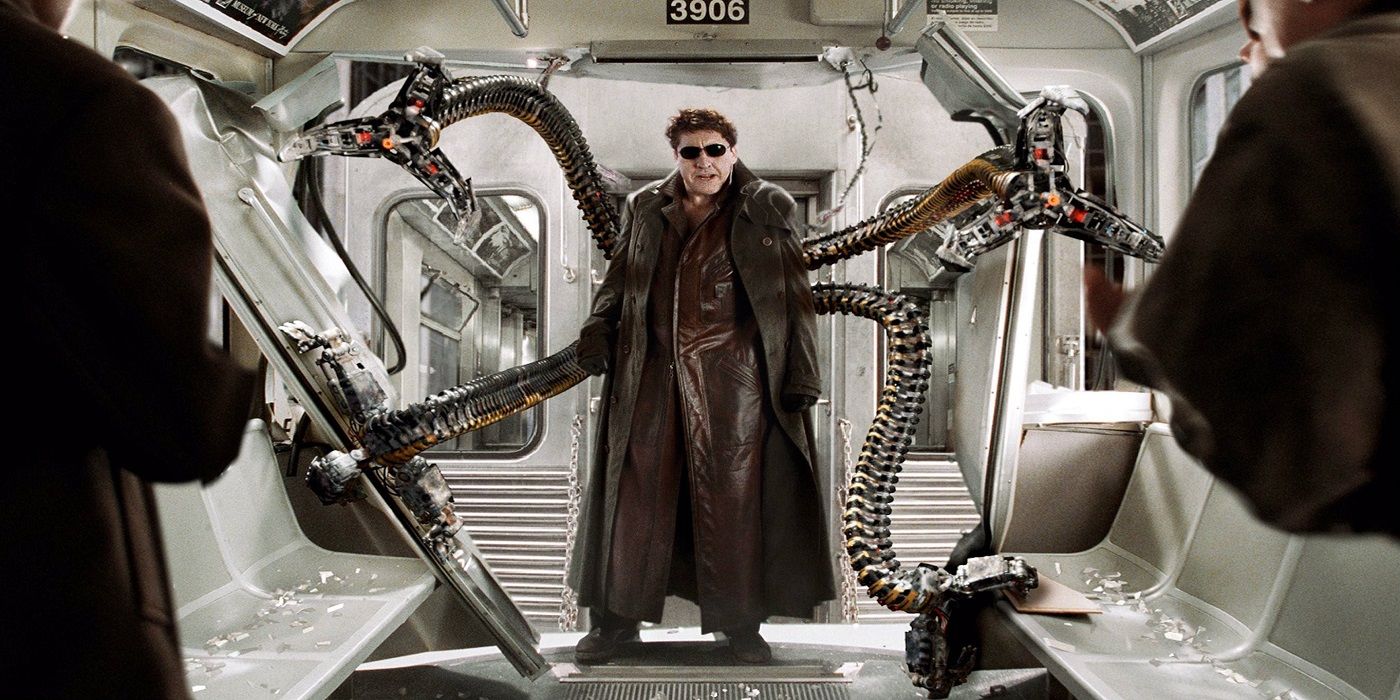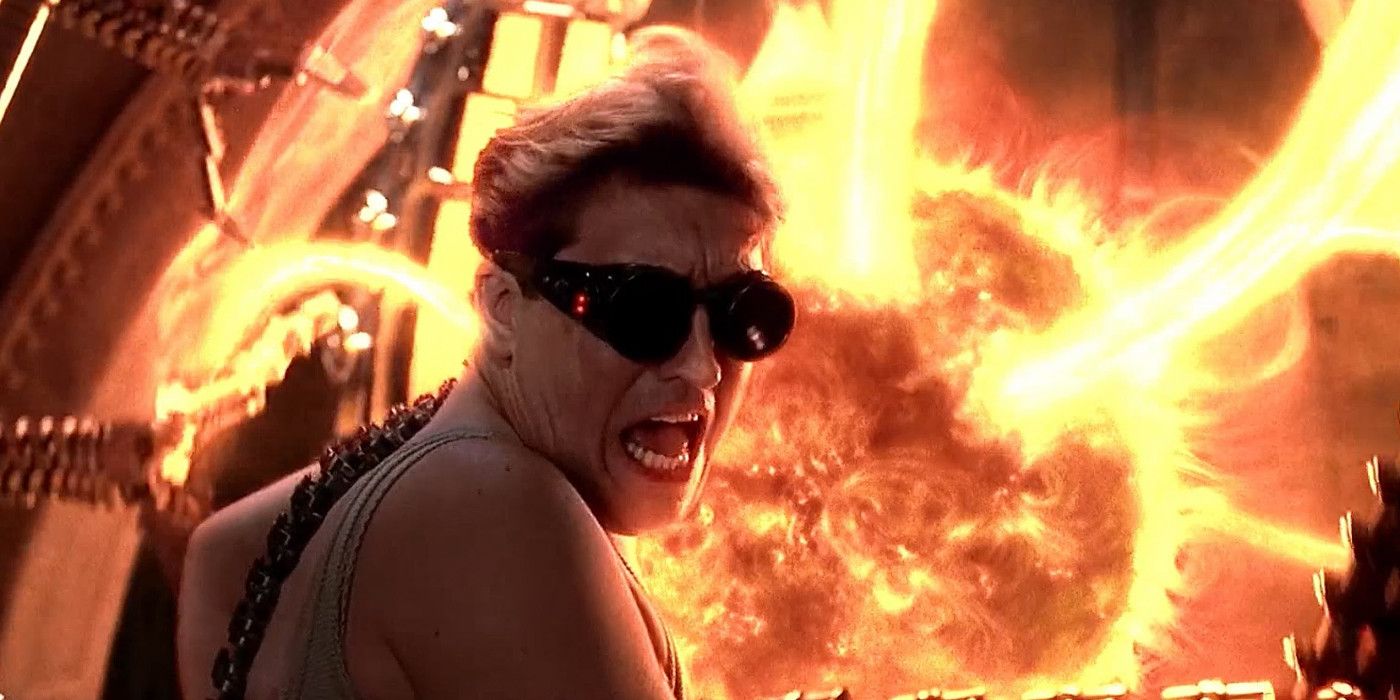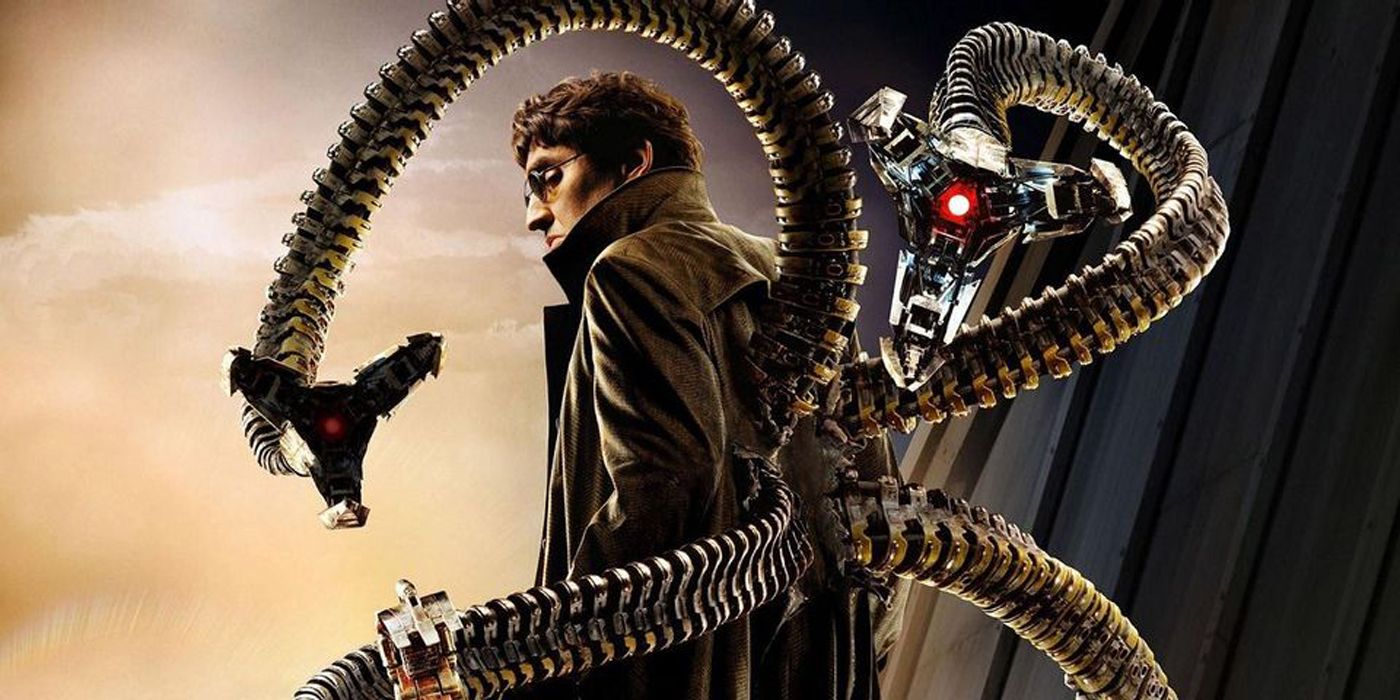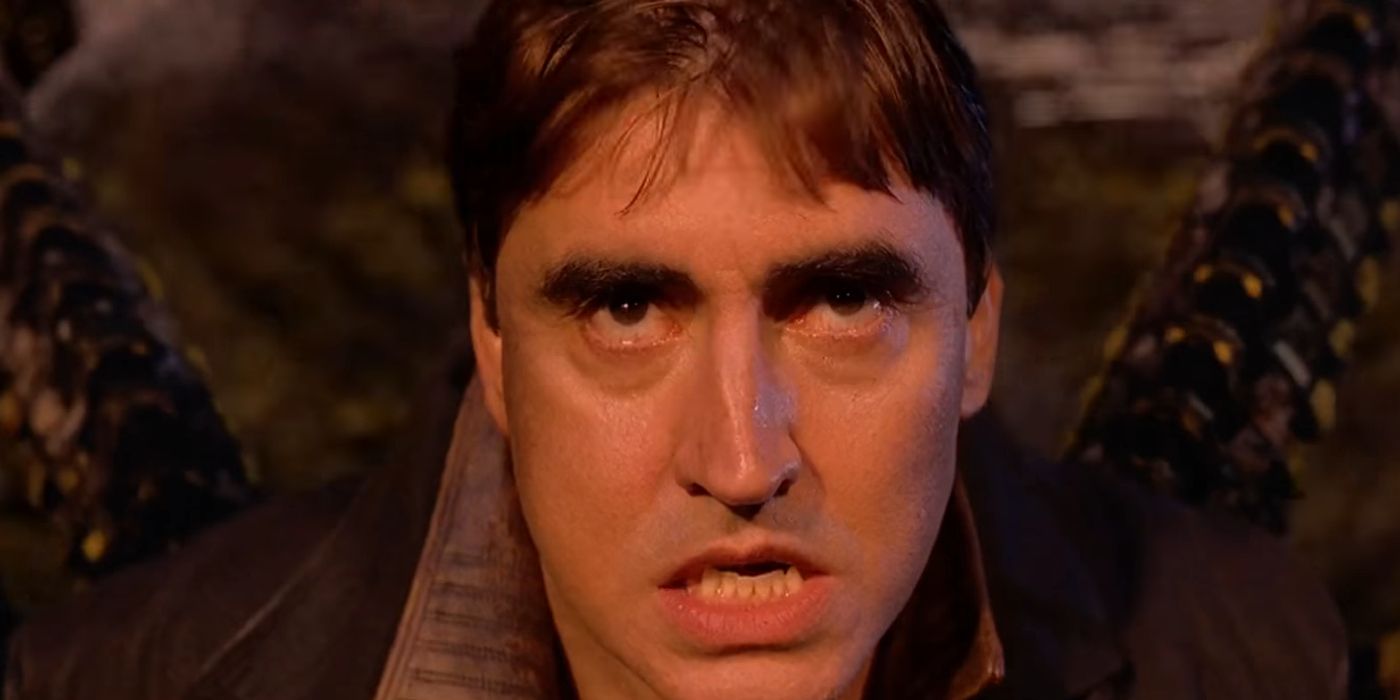Spoiler Warning: This article discusses some spoilers for Spider-Man: No Way Home.
Sam Raimi's Spider-Man trilogy is fondly remembered for many reasons--one of which is its iconic villains. While many modern superhero films are criticized for undercooked antagonists, this never seemed to be a problem in Raimi's franchise, which churned out unforgettable baddie after baddie.
While several of Spider-Man's foes stole the show in their time on screen, two stand out above the rest: Willem Dafoe's Green Goblin and Alfred Molina's Doctor Octopus, characters so iconic that they make their returns in Spider-Man: No Way Home. Both have become unforgettable rogues in their own right, with many wondering which, if either, is the best villain in the franchise.
Green Goblin
Dafoe's Intensity
Norman Osborn, AKA the Green Goblin, begins his character arc as a regular businessman, but quickly descends into hysteria after injecting himself with an experimental formula that awakens his inner demons. This spiral is brilliantly played by Willem Dafoe.
It would be incredibly easy for this kind of character to come off as campy or overblown, but Dafoe seems to keep his finger right on the pulse, managing to balance both sides of Norman Osborn. His ability to make the character both fearsome and sympathetic makes his portrayal undoubtedly the best cinematic version of the Green Goblin.
Peter's Mentor
Peter Parker has a bit of a mentor problem, with most characters that fill that role either winding up dead or turning into a supervillain--sometimes both. Following this trend, Norman Osborn happens to fall into the latter category in the 2002 original Spider-Man film.
Norman is set up as a parallel to Uncle Ben in this film, the strong father figure that Peter always needed. After Ben's death, Peter begins to gravitate more and more to Norman, until he learns that the man is actually the Green Goblin. This series of events culminates in a brutal final battle between the two, as Peter comes to realize that Ben was the only father he would ever need.
Forcing Peter To Choose
A good villain is one who changes the hero in some way--or at least causes that hero to reflect on themselves in a previously unexplored way. Green Goblin certainly performs this task for Spider-Man, doing so by forcing him to make choices of paramount importance, often with quite serious outcomes.
Whether it be through offering to join forces with Spider-Man or by literally demanding that the hero choose between saving MJ or a railcar full of children, Green Goblin never lets his rival catch his breath, constantly testing his moral fortitude. This is a quality that the MCU's Goblin seems to retain, with the trailers for No Way Home including voiceovers of the villain goading Peter to choose between his real life and his life as Spider-Man.
Relationship With Spider-Man
The Green Goblin is perhaps Spider-Man's most iconic enemy from the comics, making their relationship one of the most important in Marvel. Dafoe and Maguire establish an interesting dynamic between the two very different characters.
Goblin and Spidey didn't start off the film as enemies, with the former actually offering to become partners with Spider-Man. It was only after the hero's refusal that things turned sour. Given their interesting dynamic, many fans hoped that Green Goblin would return in the canceled Spider-Man 4 film, wanting to see more of the two's interactions. While that never happened in Raimi's trilogy, it may still occur in No Way Home, if certain rumors prove to be true.
The Goblin Legacy
Green Goblin's legacy is perhaps his most iconic piece of comic book history. It deals with the fallout of Norman Osborn's actions as the Green Goblin, leading to multiple "Goblin" iterations, such as the Hobgoblin, Demigoblin, Grey Goblin, and more. While all pale in comparison to the original, each new version only brings Peter Parker haunting memories of his archenemy.
The Raimi Spider-Man franchise includes hints at the Goblin legacy by including the most famous successor to Norman Osborn: his son Harry. Harry takes on the mantle of New Goblin in Spider-Man 3, forcing Peter to do battle with his best friend. The emotional fallout of such an event causes the Goblin to have a lasting impact on both Spider-Man and Peter Parker.
Doctor Octopus
Molina's Theatrics
Like many supervillains with origins in '60s comics, Doctor Octopus walks a very thin line between being silly and being scary. Alfred Molina's take on the character manages to avoid the pitfalls that plagued many comic book characters adapted for live-action, emerging as a truly terrifying villain.
Ock's success as a villain is due in large part to Molina's theatrical background. The actor has had quite a stage presence, including a run as Tevye in Fiddler on the Roof, a role he played onstage while filming Spider-Man 2. Molina's wealth of stage experience bleeds into his portrayal of Otto Octavius, allowing him to "go big" for dramatic scenes, but never so big that he loses the core of his character.
The Terrifying Tech
While Alfred Molina is an imposing presence as Octavius, the actor is also assisted by four tremendously terrifying sentient arms. These robotic appendages look startlingly real, being brought to life through completely practical effects, creating a more tangible threat (though the props were later replaced with CGI for No Way Home).
Ock's robot claws are just as scary as the villain himself, and, according to MCU Spider-Man actor Tom Holland, they terrified him as a child. Director Sam Raimi seemed to understand how fearsome the arms could be, adding a sequence to the movie in which Octavius murders an entire operating room full of doctors as they try to remove the arms from his body, a scene that harkens back to Raimi's horror movie roots.
Valiant Efforts
In a twist on Doctor Octopus's more villainous arcs in the comics, the character is portrayed as having mostly altruistic motives in the film version. While the comic book character invented his arms with sinister intentions, Molina's character used them as a tool to help him with more difficult experiments.
While everyone loves to see a film villain shine, some of the most compelling rogues are the ones that began with good intentions. Octavius never wanted to become Doctor Octopus, but did so when he believed it was necessary to achieve amazing things. As a result, the character becomes far more relatable, even likable, to the audience.
The Tragic Hero
The tragic hero, according to classical literature and stageplay, is a character in a lofty position who loses everything as a result of their own hubris, or pride. Definitive tragedies like Oedipus Rex, Macbeth, and Hamlet all see their main characters lose their status, wealth, and/or life because of their own fatal flaws.
Molina's Otto Octavius is the very definition of a tragic hero, whose own ego and ambition in creating renewable energy caused him to lose his wife, his life's work, and his psyche all in one fell swoop. While the audience knows that he is the villain of this story, they cannot help but identify with his pain, and some may even want him to win as a result of all he has suffered.
Redemption Arc
A great villain is one that is not so one-dimensional in character that they could never see the error of their own ways. Many baddies come to a realization about their wrongdoing in the final act of a story, making the bold and often fatal choice to stop their machinations and return to the side of the light.
In Spider-Man 2, Otto Octavius has this moment of clarity after his final fight with Peter. He realizes just how destructive his plans could be to the city, choosing to bring everything he built crashing down around him in order to stop the machine from gaining any more power. In the end, he lost his life protecting the city that he very nearly destroyed, managing to emerge as a hero.

